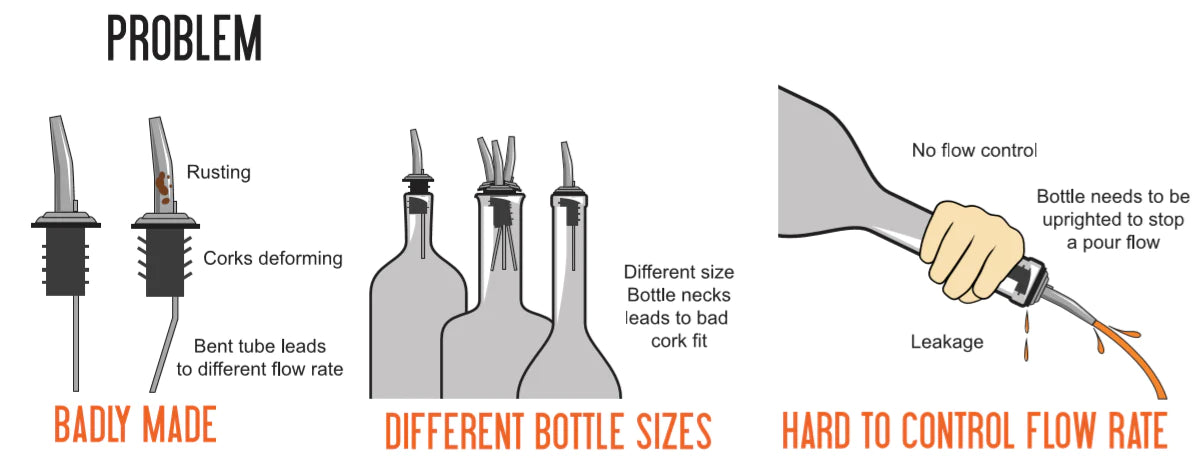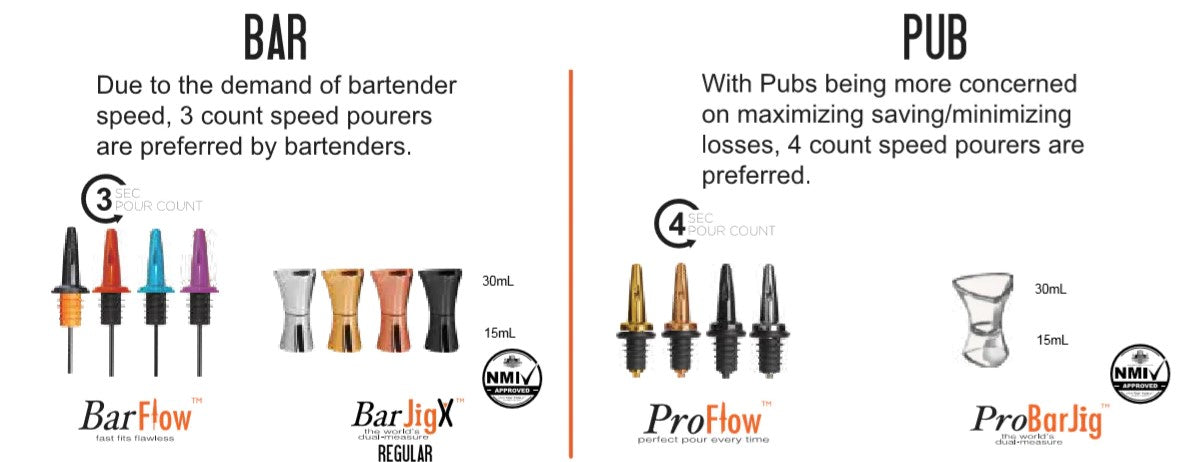
At the core of every murder mystery is a race to identify “Who Dunnit”. The perpetrator of the crime is cunning, usually cloaked in innocence to turn unsuspecting gazes elsewhere in the search for the truth..
Of course what's a mystery without a sleuth to find the culprit(s). The sleuth possesses superior deductive powers to help unmask the villain, usually the least obvious person. Liquor loss for many bars is a mystery requiring the skills of talented sleuths, like Sculpture Hospitality or BarMetrix, to discover the 'who', 'what' and 'how' of why up to 20% of every shot of alcohol poured in a bar is wasted.
When liquor loss is such an on-going problem, a victim is required... in this case a bar owner/operator and their profits. At stake is potentially tens of thousands of $$$ of lost profits. A bar pouring just 5 cases of liquor weekly can lose tens of thousands of dollars yearly, national chain accounts millions of $$$.
To begin our journey, we need to identify the usual suspects:
- Inventory: Failures in recording inventory inwards, usage and stock on hand
- Operations: Procedures and staff training
- Ullage: Broken and dropped bottles
- Misorders: Due to human error in transmission or receipt
-
Freebies: Unrecorded complimentary drinks to guests and staff.
After a process of elimination if the answer is still inconclusive, it’s assumed there’s just one thing left to point the finger at... - Theft: Staff theft
And that’s usually where the mystery ends, staff fired, with things going back to normal, or does it?
12 years ago, Überbartools™ was presented with this conundrum; we had a victim (the bar owner/operator) with the assumed motivation for the crime, money, yet there seemed to be no conclusive proof any of the above 6 suspects were to blame. At this point, we were left with two possible options: delve deeper or accept liquor loss was a possible combination of all the above. Working from the premise what if we ruled out all 6 casual factors, was there anything left?
Surprisingly, there was something so obvious we totally missed or dismissed it. The eventual answer was so obvious no one bothered to check their Speed Pourers and Liquor Measures - the very items used in a bar to minimize or eliminate loss in the first place.
To understand how the most obvious was not obvious at all, we needed to understand what happened. But first we had to go back a little in history.
History
As the saying goes, to know where we’re going we first need to study where we’ve been. This investigation took us back to around the time of Prohibition in the 1920’s.
Necessity being the mother of all invention, early bartenders needed tools to help get the job done quickly to serve the next customer, nothing strange there, right? As standards were different then, producing cocktails that protected guest outcomes wasn’t part of the thinking as it was all about speed.
Let’s face it, slinging out drinks based on the possibility that the “cops could raid the joint any minute” was a pretty powerful motivator to push out drinks fast. In this process, four things seemed to get lost in the art of cocktail making, recently rediscovered: cocktails must be memorable, consistent to taste, profitably made, valued by a guest to create the next drink ordered.
Cheap tools
If it’s all about speed, investment in proper tools to get the job done was not considered important, particularly when market expectations was built around cost (cheap). Interestingly enough, when cost is the criteria for a purchase, two things usually are sacrificed to meet a price point: quality and accuracy.
Quality sacrificed results in continuing product failure/breakage, the products purchased become consumable by default, something not valued - think straws, coasters and glassware. When price drives demand, there’s really little chance for a manufacturer to make tools more precisely nor invest in finding solutions to the many problems behind a bar, as there’s no incentive. Regrettably cheap, poorly made tools unintentionally creates a vicious cycle of buy, re-buy, again and again forever.
Bringing it back to today
If the insurance policy to protect profits relies on cheap, inaccurate tools, the result of lack of venue investment, then who does management blame for missing inventory assuming the main casual factors above (points 1-5) are eliminated? Why, it’s the poor bartender. So here’s where we’re at...
Measures
Cheaply-made jiggers and measuring tools are mostly inaccurate. Arising cavity volume tolerances av. 3-5mL/serve (1/10 or1/6oz), making its easy for bartenders to overpour.
As measures are round by design, we know from physics that this creates a surface tension or bubble/lens called the meniscus. This adds 3-5mL (1/10-1/6oz) to a 30mL or 1oz serve. Pouring out from a round measure makes it easy to spill. A watching guest would expect a bartender to pour more spirits into their drink to compensate for the spills.. and therein lies part of the wastage issue.

Pourers
Even though big companies, like Diageo Bar Academy, don't recommend Free Pouring for its disadvantages such as pouring inconsistency and wastage, it's still a prevalent practice in the bar industry. The standard count varies per businesses, geographic locations and even bartender preference.
It takes about 3 seconds to pour approximately 30mL or 1oz (29.41mL in Canada, 29.57mL in the USA) of spirits. Known as the "3-count pour", this system of measurement is the de facto standard relied on by bartenders and management for pour control.
However, according to BinWise, a business for end-to-end bar inventory management systems, "The generally accepted free pouring technique and bartending counting method is to use a 4 count and have each number equal half an ounce poured.
But counting to four doesn’t make it the right amount. Counting to four at the right speed is what you’re after. And the key to doing that is practice. Grab a bottle (the size of a fifth of alcohol), fill it with water, add a pour spout, and get your 1-2-3-4 cadence down to equal .5 ounces per count. Just make sure to practice on well liquor, not top shelf."
Overall, with poor skills and flow control, an innocent ½ second reaction time to stop a pour stream results in an additional 5-10mL (1/6 or 1/3oz) of alcohol being overpoured.
On the other hand, cheaply-made pourers are subject to continuous breakage and replacement. Further spirits loss is caused from bottle neck leakage when corks attached to speed pourers do not seal bottles correctly, causing liquid to stream out from around corks/bottle neck seal.

The Perfect Pour System
Thankfully, it’s not all gloom and doom, as there’s a cost effective solution to reduce or stop spirit loss. A proven combination of innovative Pourers and Jiggers designed to reduce/eliminate the above issues. Download our Pouring and Measuring Whitepaper to learn more how the Überbartools solutions have helped countless bars, pubs, clubs, hotels and more.



